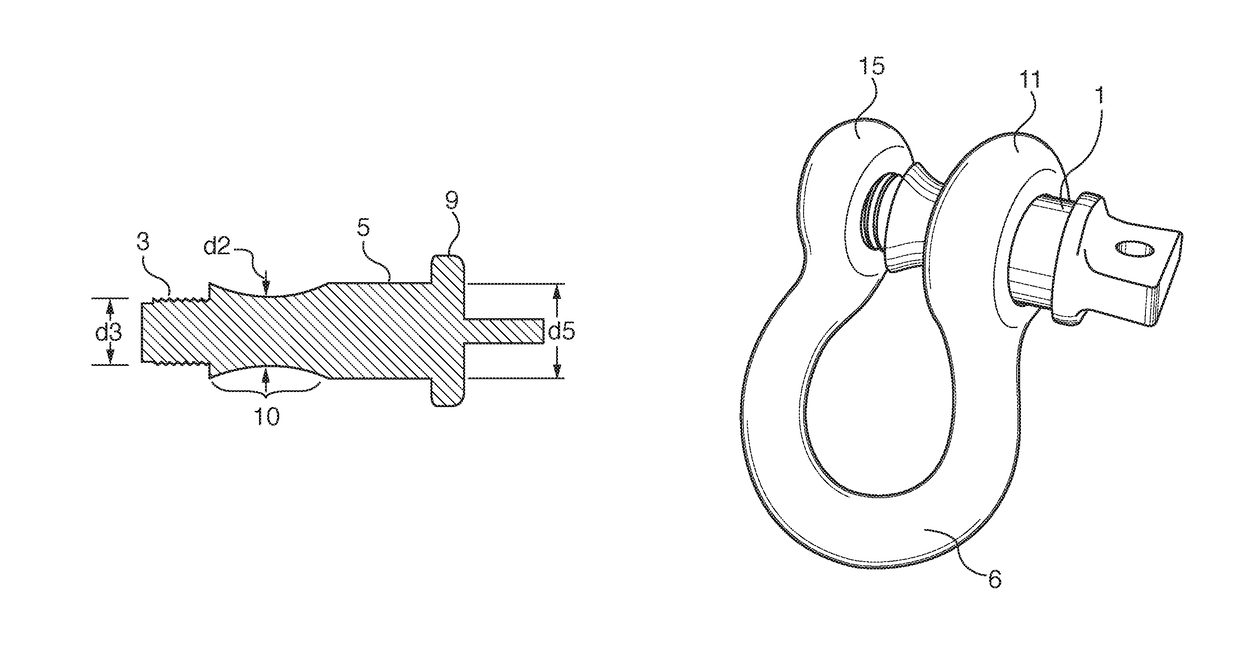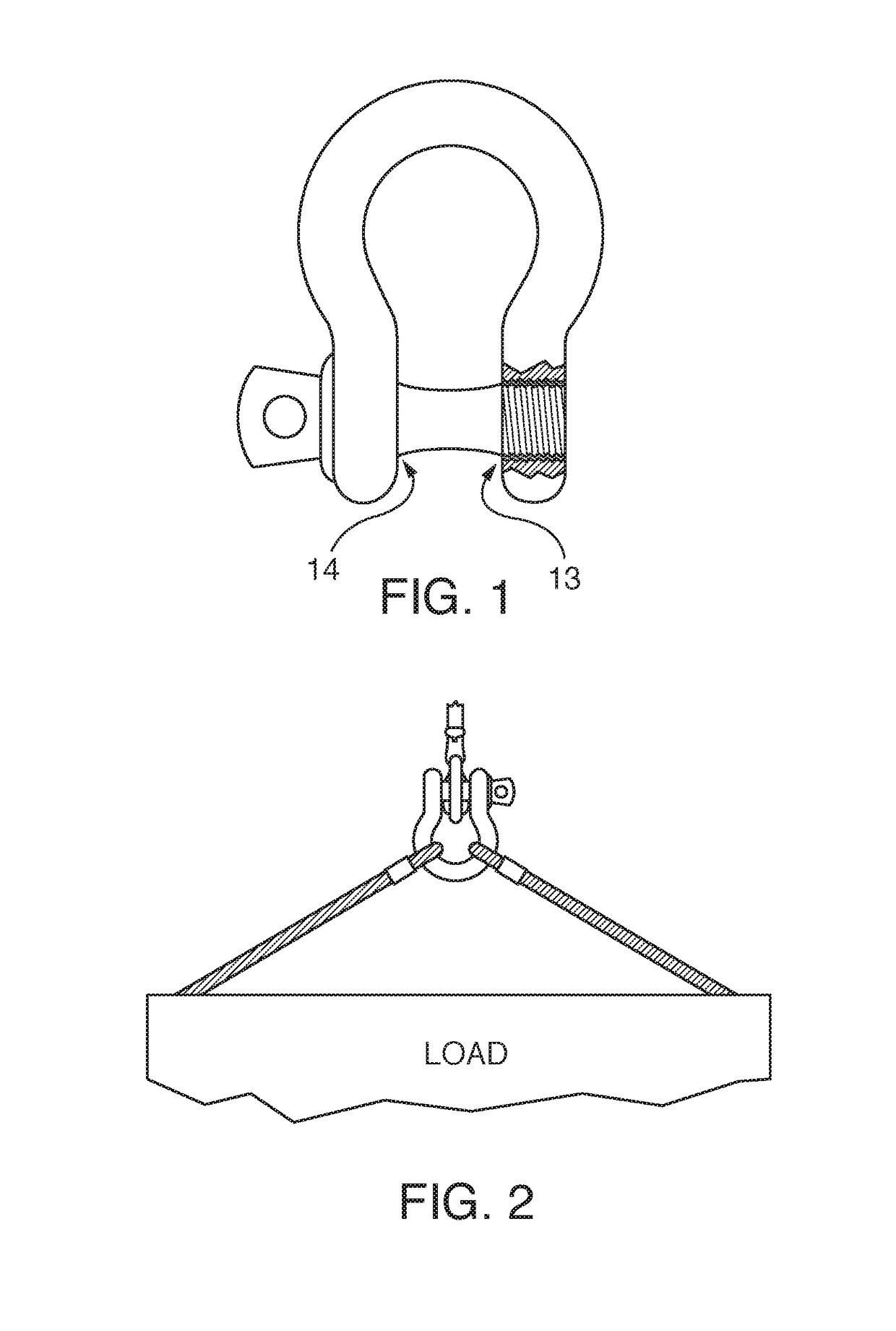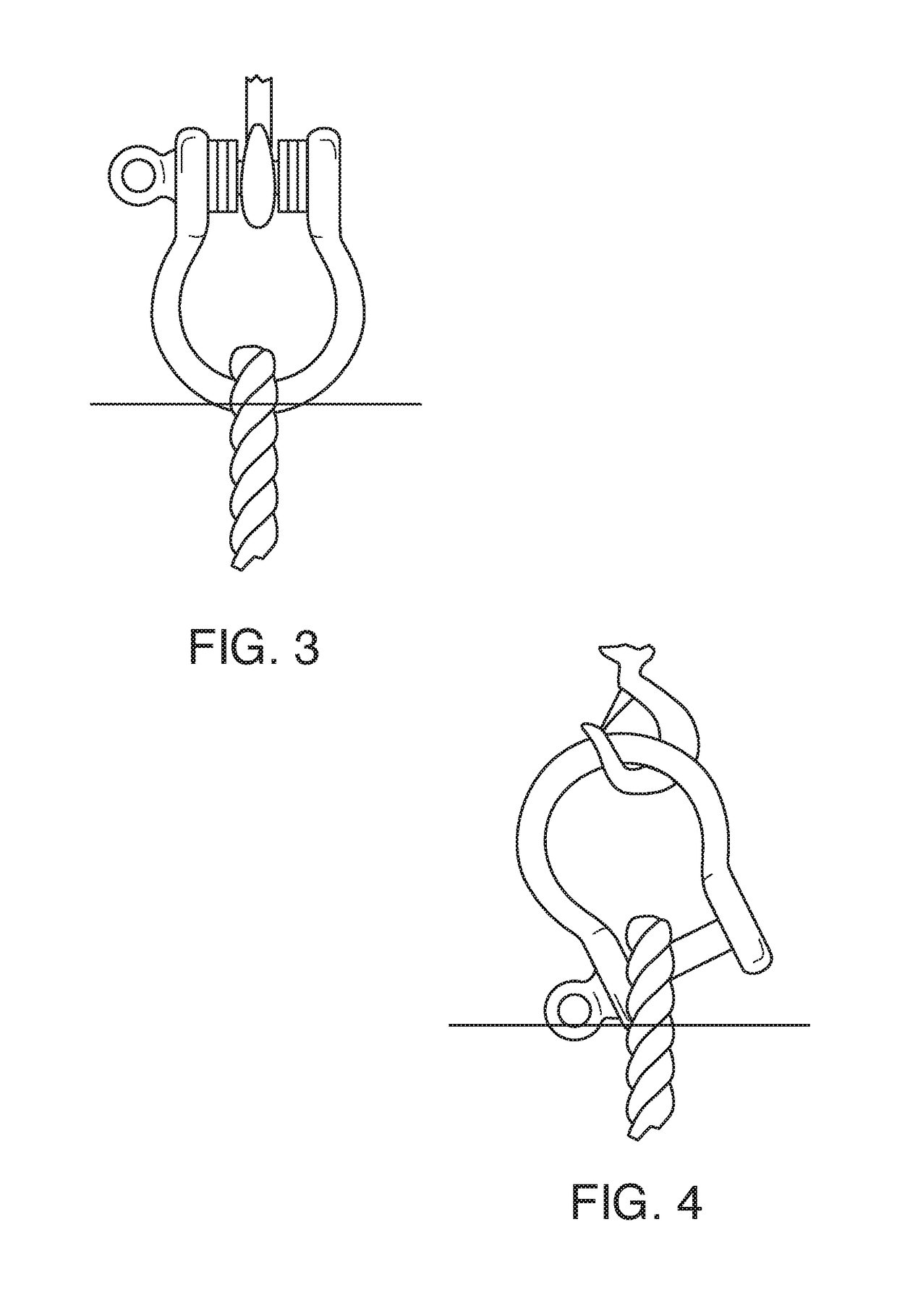Shackle with self centering closure cross member
a cross member and self-centering technology, applied in the direction of shackles, load-engaging elements, vehicle components, etc., can solve the problems of many different sizes of washers and sleeves, difficult to obtain configuration, and the propensity of these small add-on parts to get lost when not in use,
- Summary
- Abstract
- Description
- Claims
- Application Information
AI Technical Summary
Benefits of technology
Problems solved by technology
Method used
Image
Examples
Embodiment Construction
[0021]Shackles are used in rigging and come in a variety of sizes and load bearing capacities. Typically, a shackle has a retractable cross member (often called a closure cross member, bolt or pin) which fits through two lug holes equal in diameter located on both ends of the shackle loop (often called the shackle body or bail). FIG. 3 and FIG. 4.
[0022]Ropes or steel cables are usually rigged to a load and then connected to the main hook on a crane or other type hoist by means of a shackle. FIG. 2. Care should be taken to make certain that the connection to the closure member of the shackle is in the center of the closure member between the two lugs and at 90 degrees to the closure member pin centerline. FIG. 2 and FIG. 3. Side loading of the closure member should be avoided because the load bearing capacity of a shackle is compromised in this load configuration. FIG. 4. Instead, loading perpendicular to the cross member of the shackle and in the plane of the bow is preferred. FIG. ...
PUM
 Login to View More
Login to View More Abstract
Description
Claims
Application Information
 Login to View More
Login to View More - R&D
- Intellectual Property
- Life Sciences
- Materials
- Tech Scout
- Unparalleled Data Quality
- Higher Quality Content
- 60% Fewer Hallucinations
Browse by: Latest US Patents, China's latest patents, Technical Efficacy Thesaurus, Application Domain, Technology Topic, Popular Technical Reports.
© 2025 PatSnap. All rights reserved.Legal|Privacy policy|Modern Slavery Act Transparency Statement|Sitemap|About US| Contact US: help@patsnap.com



